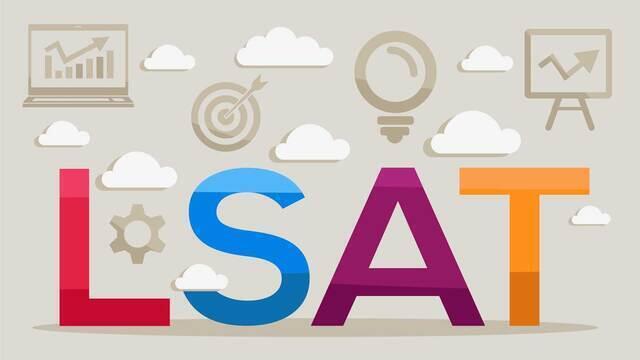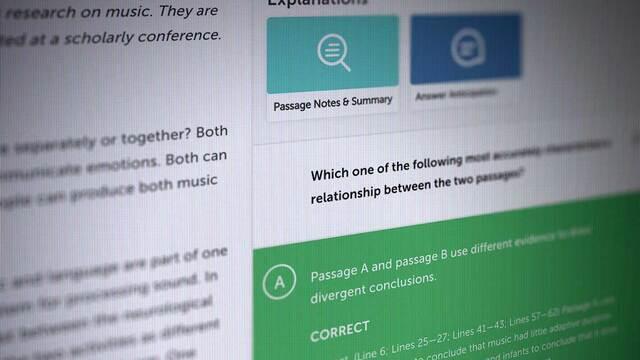Given the issues with remote LSAT testing earlier in August, we’re hearing from many concerned test-takers whether they should take their future LSATs in person or at a remote test center.
The LSAC’s first foray into “dual-mode testing” was not a rousing success by any means. Many test-takers who chose the remote testing option for the August LSAT had to suffer through extended wait times, unstable connections to the testing interface, and proctors who enforced non-existent rules or who, in some cases, just stopped proctoring while test-takers were still taking their tests. Not an auspicious start, we think it’s fair to say.
That said, things are looking more promising now. LSAC held a retake day for test-takers affected by the above issues on August 19 and 20. By most accounts, the remote test-takers had a much smoother experience this time. And, in anticipation of the September LSAT, LSAC announced that it’ll add a Sunday, September 10 test day. This extra day should help alleviate the demand on Prometric’s proctors, hopefully fixing some of the staffing issues that led to the problems in August.
Still, snakebitten and suspicious test-takers may still be wary of the remote testing option. For such test-takers, the in-person option may sound enticing. So, with that in mind, let’s discuss each option, the pros and cons of each, and how you can prepare for either.
What you’ll need for in-person and remote testing
If you choose to take the test at home, you must supply a laptop or desktop computer that meets Prometric's requirements. You’ll also need to find a private, quiet space to take the exam. If you test these digital testing centers, Prometric will provide you with a computer, a proctor, scratch paper, pencils, and a (hopefully quiet) space to take the LSAT.
The pros and cons of in-person and remote testing
Whether you take the exam at home or in a test center, your LSAT will be essentially the same. Your test will consist of the same four sections, delivered with the same digital interface. Still, there are meaningful differences between the at-home LSAT and the test-center LSAT that are worth considering.
Assuming you have a private, comfortable, and quiet place to take the LSAT, the at-home LSAT allows you to take the LSAT in a familiar, easily accessible space. These advantages cannot be discounted. Psychologists have studied the phenomenon of "state-dependent learning," which suggests that we can recall information more readily if we're in a similar space and mindset as we were when we first learned the material. This phenomenon suggests that taking the LSAT at the same desk, with the same computer, and in the same room that you used to study for LSAT may improve your score. This phenomenon is perhaps one reason LSAT scores increased when the test first switched to its at-home model.
Learn more about this "score bubble" in this video.
For most people, taking the LSAT at home is more convenient than driving to a test center. Ask anyone who had to take the LSAT before 2020 whether driving to a testing center and a lengthy check-in process contributed to their test-day stress. The at-home test eliminates these annoyances.
But the at-home test has its challenges. Even before the August test, technical issues and misinformed proctors have plagued some at-home test-takers. While these incidents were rare on most pre-August exams, they can ruin the test-day experience of affected test-takers. While LSAC offers free makeup exams for affected test-takers, most would prefer not to take the LSAT multiple times.
Prometric boasts that it operates over 8,000 test centers across 180 countries and administers hundreds of exams. You can expect a secure internet connection and professional proctors at their test centers. Prometric uses in-person proctors to supervise test-takers. That means Prometric proctors cannot take over your cursor or keyboard, unlike the remote proctors of the at-home LSAT. These test centers can be a good option if you do not have a comfortable, quiet, or private location to take the exam or your internet connection is not strong enough to guarantee a secure connection through the test.
That said, don't expect an entirely distraction-free experience at a Prometric test center. In all likelihood, several test-takers will take several different exams while you complete the LSAT. These test-takers may finish their exams before you and produce some noise as they gather their materials and leave the test center. If you find this level of noise and movement distracting, a Prometric test center may not be right for you.
A few test-takers must take the LSAT at a Prometric test center. If you do not have the equipment to take the at-home LSAT, you will need to sign up to take the exam at Prometric. Before the LSAT was offered at test centers, LSAC shipped Microsoft tablets to test-takers who didn't have the necessary equipment and provided hotel vouchers to test-takers who needed to rent a room to have a suitable test venue. However, LSAC suspended these programs when it began offering the LSAT at test centers in August 2023.
Those who receive certain test accommodations, like a paper-and-pencil version of the test, and international test-takers are also encouraged to take the test at a test center.
Assuming you can choose where to take the LSAT, consider the above pros and cons of each option and how they relate to your circumstances. If you decide to take the exam at a test center, you must sign up for a spot at least thirty days before your LSAT. You can, however, decide to switch to the remote option up to three days before your LSAT. If you select the at-home option, you can only change to the test center option if you opt to do so at least thirty days before your LSAT.
How to prepare for the remote option
If you opt for the remote test option, try to create a dedicated study space. This study space should allow you to study for the LSAT comfortably and with minimal distractions and, ideally, be easily converted into a space where you can take the real LSAT. That means this should be a private room that meets the remote testing requirements.
Studying in the same place where you’ll take the test can help you take advantage of the "state-dependent learning" phenomenon discussed above. Likewise, try to schedule the exam for the same time you typically study. About a week before you're scheduled to take the exam, you'll get an email inviting you to select the time slot when you'll take the exam. Choose a slot that's during the time you normally study for the LSAT. Unless your schedule forces you to study really early in the morning or late at night, the time you usually study for the LSAT is when you'll perform at the peak of your LSAT abilities.
How to prepare for the in-person option
If you plan to take the exam at a test center, try to study as much as possible in quiet public spaces, like a library. Starting a few weeks before the exam, take all of your practice exams in these public places. This will help you become accustomed to the minor distractions and ambient sounds at a Prometric test center. As we noted above, other test-takers may finish their exams before you and can distract you as they exit the test center. Getting used to this noise level by taking practice tests in a public space can reduce the likelihood that these noises will distract you or negatively affect your test experience.
Learn more about preparing for the in-person option in this video.









